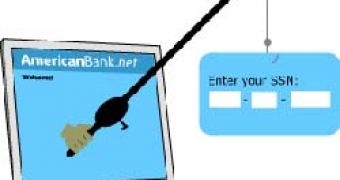Phishing is a serious problem and every time a piece of news appears you get a warning about how to dodge that particular phishing scam, but in this tutorial, I'm going to give you the info that is bound to make you almost invulnerable to data theft. And I'm saying almost, because you can't help it if a hacker breaches a database you have no control over.
Now, how do people phish? Basically, it's clone sites and keyloggers. Here's how to stay safe against both.
Note that no organization will ask for your data online. So, if you get an e-mail from some bank, or institution or whatever saying that you need to logon some account in order for them to run a service for you, it is best to be careful. If you get this in an e-mail, with a link attached to the message, there are 2 possibilities - either this will lead you to a clone site that indeed will ask you for some info, or directly download a Trojan.
Now, if you do get to the clone-site, which is a fake website that looks identical with the official one, you will be asked for your data. Try avoiding this - it's generally phishing. But if you think that your bank or whatever might have legitimate reasons to do this, then just go to the bank site through the usual link you use in the browser, and not by following the one in the e-mail. Some organizations even go and state that they will never ask for your data online, so pay attention and do not disclose your info on sham sites!
Then, there's the keylogger issue - clicking on dubious links included in e-mail messages will get your machine infected with a virus that will record anything you type, thus stealing information. This is why you're advised to always have an active anti-virus protection on your computer.
Phishers will pretend to be high profile companies - do not fall for it! Whenever you get an e-mail that asks for your data be careful about it - if it has a link, whatever you do, do not click it. Instead, visit the site of the firm the mail seems to be from. If you can't get any info from there, then the mail you just got was definitely a phisher's tool!

 14 DAY TRIAL //
14 DAY TRIAL //